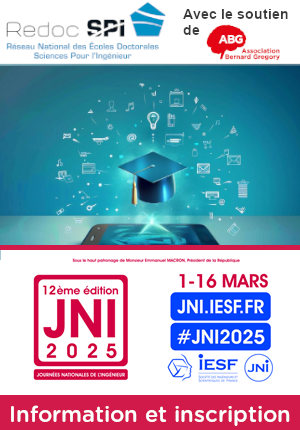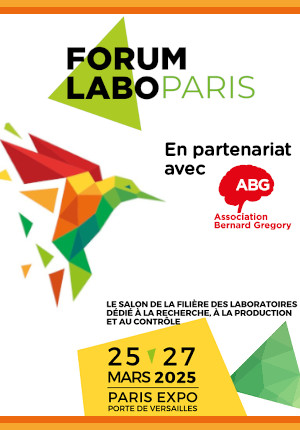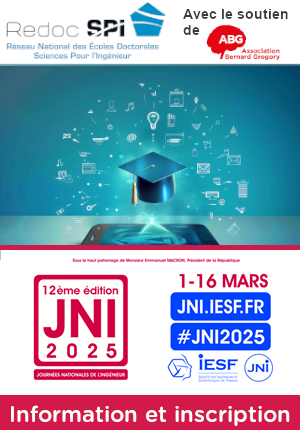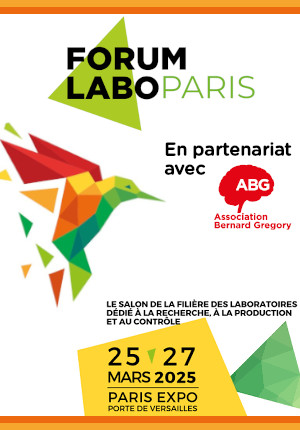Blocage de l'invasion tumorale dans le gliome infiltrant du tronc cérébral à l'aide d'IA générative et de la technologie « Digital Cell Twin » // Blocking tumoral invasion in Diffuse Intrinsic Pontine Glioma using generative AI and Digital Cell Twin techn
|
ABG-128609
ADUM-61275 |
Thesis topic | |
| 2025-02-14 |
Université de Bordeaux
BORDEAUX - France
Blocage de l'invasion tumorale dans le gliome infiltrant du tronc cérébral à l'aide d'IA générative et de la technologie « Digital Cell Twin » // Blocking tumoral invasion in Diffuse Intrinsic Pontine Glioma using generative AI and Digital Cell Twin techn
- Biology
Cancer, gliome, invasion, intelligence artificielle générative, expérimentation animale, biologie moléculaire et cellulaire
Cancer, glioma, invasion, generative artificial intelligence, animal experiments, molecular and cellular biology
Cancer, glioma, invasion, generative artificial intelligence, animal experiments, molecular and cellular biology
Topic description
Contexte scientifique
Le gliome infiltrant du tronc cérébral (ou DIPG en anglais) est l'une des formes les plus mortelles de tumeurs cérébrales pédiatriques. Les propriétés invasives et migratoires des cellules du DIPG ont un rôle clé dans l'agressivité de la tumeur et la mortalité des patients qui en résulte. Mieux connaître les mécanismes moléculaires qui gouvernent la capacité migratoire et invasive des cellules de DIPG permettrait de développer de nouvelles thérapies visant à bloquer ces processus. L'équipe MIRCADE s'est associée à DeepLife, une société de biotechnologie qui accélère la découverte de médicaments en utilisant la bioinformatique et l'intelligence artificielle (IA) générative. L'entreprise s'appuie sur l'analyse avancée des données multi-omiques, l'apprentissage automatique et la biologie des systèmes pour créer le « jumeau numérique des cellules » (ou « digital cell twin ») et sélectionner des médicaments candidats capables de franchir la barrière hémato-encéphalique.
Objectifs et méthodologie
Notre projet de collaboration vise tout d'abord à effectuer une analyse approfondie du paysage moléculaire des lignées cellulaires de DIPG ayant des capacités invasives variables afin de créer le « jumeau numérique des cellules de DIPG invasives » et d'identifier des nouvelles cibles thérapeutiques prometteuses parmi les gènes pro-invasifs et leurs inhibiteurs spécifiques. La capacité pro-invasive du ou des gènes d'intérêt sélectionnés sera ensuite confirmée en laboratoire sur des cellules de lignée de DIPG en utilisant une combinaison d'approches in vitro et in vivo, des inhibiteurs pharmacologiques et des approches génétiques de perte et gain de fonction.
Résultats attendus
A travers ce projet interdisciplinaire original, qui combine la bioinformatique, l'IA et la biologie du cancer, nous espérons développer des composés anticancéreux ciblant la nature hautement invasive des cellules de DIPG, capables de traverser la barrière hémato-encéphalique et de stopper la progression de la tumeur. En conclusion, notre projet devrait déboucher à des avancées majeures dans le traitement de cette maladie pédiatrique incurable et potentiellement d'autres types de gliomes diffus.
------------------------------------------------------------------------------------------------------------------------------------------------------------------------
------------------------------------------------------------------------------------------------------------------------------------------------------------------------
Scientific background
Diffuse intrinsic pontine glioma (DIPG) is one the most lethal forms of pediatric brain tumors. The invasive and migratory properties of DIPG cells are key contributors to tumor aggressiveness and the resulting patient mortality. Therefore, better understanding the molecular mechanisms that drive the migration and invasion of DIPG cells should lead to the development of new therapies aimed at blocking these key processes. The MIRCADE team has partnered with DeepLife, a biotech company that accelerates drug discovery by using bioinformatics and generative artificial intelligence (AI). The company leverages advanced multi-omics, machine learning, and systems biology to create the “Digital Twin of Cells” and select drug candidates capable of crossing the blood-brain barrier.
Objectives and methodology
Our collaborative project aims to first perform an in-depth analysis of the molecular landscape of different DIPG cell lines with varying invasion capacities in order to create a “Digital Twin of invasive DIPG cells” and identify new pro-invasive genes as bona fide drug targets and their associated inhibitors. Next, the pro-invasive capacity of selected genes of interest will be experimentally confirmed in MIRCADE lab in DIPG cells using a combination of in vitro and in vivo approaches, including pharmacological inhibitors and genetic approaches.
Expected results
Through this original interdisciplinary project, which combines bioinformatics, AI and cancer biology, we hope to develop innovative therapies targeting the highly invasive nature of DIPG cells, capable of crossing the blood-brain barrier and halting the progression of DIPG. In conclusion, our project should lead to major breakthroughs in the treatment of this dismal pediatric disease and potentially other diffuse gliomas.
------------------------------------------------------------------------------------------------------------------------------------------------------------------------
------------------------------------------------------------------------------------------------------------------------------------------------------------------------
Début de la thèse : 01/10/2025
WEB : https://www.bricbordeaux.com/bric-team/mircade-methodes-et-innovations-pour-la-recherche-sur-les-cancers-de-lenfant/
Le gliome infiltrant du tronc cérébral (ou DIPG en anglais) est l'une des formes les plus mortelles de tumeurs cérébrales pédiatriques. Les propriétés invasives et migratoires des cellules du DIPG ont un rôle clé dans l'agressivité de la tumeur et la mortalité des patients qui en résulte. Mieux connaître les mécanismes moléculaires qui gouvernent la capacité migratoire et invasive des cellules de DIPG permettrait de développer de nouvelles thérapies visant à bloquer ces processus. L'équipe MIRCADE s'est associée à DeepLife, une société de biotechnologie qui accélère la découverte de médicaments en utilisant la bioinformatique et l'intelligence artificielle (IA) générative. L'entreprise s'appuie sur l'analyse avancée des données multi-omiques, l'apprentissage automatique et la biologie des systèmes pour créer le « jumeau numérique des cellules » (ou « digital cell twin ») et sélectionner des médicaments candidats capables de franchir la barrière hémato-encéphalique.
Objectifs et méthodologie
Notre projet de collaboration vise tout d'abord à effectuer une analyse approfondie du paysage moléculaire des lignées cellulaires de DIPG ayant des capacités invasives variables afin de créer le « jumeau numérique des cellules de DIPG invasives » et d'identifier des nouvelles cibles thérapeutiques prometteuses parmi les gènes pro-invasifs et leurs inhibiteurs spécifiques. La capacité pro-invasive du ou des gènes d'intérêt sélectionnés sera ensuite confirmée en laboratoire sur des cellules de lignée de DIPG en utilisant une combinaison d'approches in vitro et in vivo, des inhibiteurs pharmacologiques et des approches génétiques de perte et gain de fonction.
Résultats attendus
A travers ce projet interdisciplinaire original, qui combine la bioinformatique, l'IA et la biologie du cancer, nous espérons développer des composés anticancéreux ciblant la nature hautement invasive des cellules de DIPG, capables de traverser la barrière hémato-encéphalique et de stopper la progression de la tumeur. En conclusion, notre projet devrait déboucher à des avancées majeures dans le traitement de cette maladie pédiatrique incurable et potentiellement d'autres types de gliomes diffus.
------------------------------------------------------------------------------------------------------------------------------------------------------------------------
------------------------------------------------------------------------------------------------------------------------------------------------------------------------
Scientific background
Diffuse intrinsic pontine glioma (DIPG) is one the most lethal forms of pediatric brain tumors. The invasive and migratory properties of DIPG cells are key contributors to tumor aggressiveness and the resulting patient mortality. Therefore, better understanding the molecular mechanisms that drive the migration and invasion of DIPG cells should lead to the development of new therapies aimed at blocking these key processes. The MIRCADE team has partnered with DeepLife, a biotech company that accelerates drug discovery by using bioinformatics and generative artificial intelligence (AI). The company leverages advanced multi-omics, machine learning, and systems biology to create the “Digital Twin of Cells” and select drug candidates capable of crossing the blood-brain barrier.
Objectives and methodology
Our collaborative project aims to first perform an in-depth analysis of the molecular landscape of different DIPG cell lines with varying invasion capacities in order to create a “Digital Twin of invasive DIPG cells” and identify new pro-invasive genes as bona fide drug targets and their associated inhibitors. Next, the pro-invasive capacity of selected genes of interest will be experimentally confirmed in MIRCADE lab in DIPG cells using a combination of in vitro and in vivo approaches, including pharmacological inhibitors and genetic approaches.
Expected results
Through this original interdisciplinary project, which combines bioinformatics, AI and cancer biology, we hope to develop innovative therapies targeting the highly invasive nature of DIPG cells, capable of crossing the blood-brain barrier and halting the progression of DIPG. In conclusion, our project should lead to major breakthroughs in the treatment of this dismal pediatric disease and potentially other diffuse gliomas.
------------------------------------------------------------------------------------------------------------------------------------------------------------------------
------------------------------------------------------------------------------------------------------------------------------------------------------------------------
Début de la thèse : 01/10/2025
WEB : https://www.bricbordeaux.com/bric-team/mircade-methodes-et-innovations-pour-la-recherche-sur-les-cancers-de-lenfant/
Funding category
Funding further details
Appel à projets - UB PhD Scholarships
Presentation of host institution and host laboratory
Université de Bordeaux
Institution awarding doctoral degree
Université de Bordeaux
Graduate school
154 Sciences de la Vie et de la Santé
Candidate's profile
Les pré-requis pour le candidat ou la candidate sont un bon niveau général en biologie cellulaire, cancérologie et en anglais, ainsi qu'une solide motivation. Des connaissances supplémentaires en expérimentation animale, approches omiques et/ou en bioinformatique seront particulièrement appréciées.
Sont éligibles uniquement des candidatures internationales, à savoir :
- des candidates ou candidats ayant obtenu (ou en cours d'obtention de) leur diplôme d'accès au doctorat (Master ou équivalent) dans un établissement à l'étranger
- des candidates ou candidats actuellement dans un Graduate Program de l'université de Bordeaux, inscrits en deuxième année de Master et ayant obtenu leur diplôme d'accès au Master dans un établissement à l'étranger
Seront prises en compte uniquement les candidatures soumises sur la plateforme suivante : https://aap.u-bordeaux.fr/ et avant le 17 mars à 23h59 (GMT Paris).
Un guide de candidature ainsi que la liste des documents à soumettre sont disponibles sur la plateforme.
Pour toute question, veuillez contacter : internationalisation.doctorat@u-bordeaux.fr
The requirements for the candidate are a good general level in biology, cancerology and in English and French speaking, as well as a strong motivation. Knowledge in animal experimentation, omics and/or bioinformatics will be further appreciated. The UB PhD scholarship program is open to international candidates only, which means: - candidates holding (or currently enrolled in) a national level master's degree or another degree conferring master's status from a foreign institution - candidates currently in a Graduate Program, enrolled in second year of Master at the University of Bordeaux, and holding a degree from a foreign institution We will only consider applications submitted on the following platform: https://aap.u-bordeaux.fr/ and prior March 17, at 11:59pm (GMT Paris). A guide on how to apply as well as the list of documents to submit are available on the platform. For any question, please contact: internationalisation.doctorat@u-bordeaux.fr
The requirements for the candidate are a good general level in biology, cancerology and in English and French speaking, as well as a strong motivation. Knowledge in animal experimentation, omics and/or bioinformatics will be further appreciated. The UB PhD scholarship program is open to international candidates only, which means: - candidates holding (or currently enrolled in) a national level master's degree or another degree conferring master's status from a foreign institution - candidates currently in a Graduate Program, enrolled in second year of Master at the University of Bordeaux, and holding a degree from a foreign institution We will only consider applications submitted on the following platform: https://aap.u-bordeaux.fr/ and prior March 17, at 11:59pm (GMT Paris). A guide on how to apply as well as the list of documents to submit are available on the platform. For any question, please contact: internationalisation.doctorat@u-bordeaux.fr
2025-03-17
Apply
Close
Vous avez déjà un compte ?
Nouvel utilisateur ?
More information about ABG?
Get ABG’s monthly newsletters including news, job offers, grants & fellowships and a selection of relevant events…
Discover our members
 Institut de Radioprotection et de Sureté Nucléaire - IRSN - Siège
Institut de Radioprotection et de Sureté Nucléaire - IRSN - Siège  Groupe AFNOR - Association française de normalisation
Groupe AFNOR - Association française de normalisation  PhDOOC
PhDOOC  ADEME
ADEME  MabDesign
MabDesign  ONERA - The French Aerospace Lab
ONERA - The French Aerospace Lab  Ifremer
Ifremer  Aérocentre, Pôle d'excellence régional
Aérocentre, Pôle d'excellence régional  Nokia Bell Labs France
Nokia Bell Labs France  SUEZ
SUEZ  Institut Sup'biotech de Paris
Institut Sup'biotech de Paris  Laboratoire National de Métrologie et d'Essais - LNE
Laboratoire National de Métrologie et d'Essais - LNE  CASDEN
CASDEN  Généthon
Généthon  MabDesign
MabDesign  CESI
CESI  ANRT
ANRT  TotalEnergies
TotalEnergies  Tecknowmetrix
Tecknowmetrix










